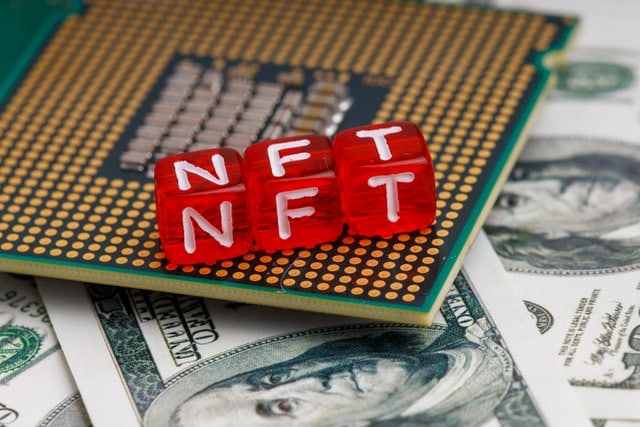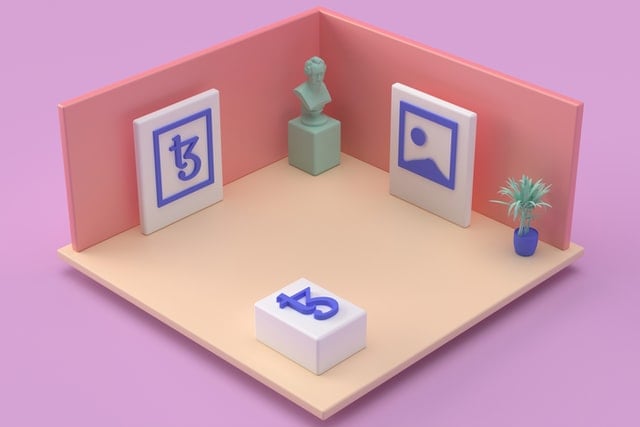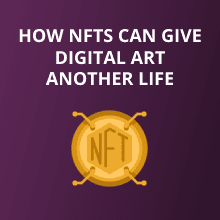Having started from only $24.02 million in 2019, in 2021, the market size of NFT has already reached $13,981.9 million, and it continues to grow at a rapid pace.
Throughout the last years, NFT was by far one of the hottest topics discussed in the business and professional communities and literally everywhere else, including college dorms.
Experts predict that NFT is the future of gaming, sports, and other segments.
But, it seems to have an especially huge impact on the arts industry.
One way or another, NFTs are already shaping the global market and dictating new trends.
Thus, as an art student, if you want to be future-ready, you should really bother learning more about it, even if it seems like you don’t have any time to waste.
After all, you can get academic support at WritePaper and save enough time for figuring out this new and exciting topic.
So, don’t hesitate to get started ASAP.
And we will help you by explaining how NFT can give another life to digital art!

Protecting Intellectual Property
As an artist or creator, you should know that intellectual property rights have always been among the major pain points for artistic people.
Protecting your work has never been an easy task.
And, now, living in a digital world, it has gotten even more complicated to keep your rights.
But, NFTs were actually meant to protect creators from any issues concerning their intellectual property.
Here is a thing – when you create an NFT asset (let’s say an artwork), you automatically receive all intellectual rights on it, and your rights will be documented in your token’s unique ID.
To put it simply, by creating an NFT of your work, you receive a sort of certificate of authenticity or a deed, which will be recorded on a blockchain and prove your rights for a particular property.
And there is more.
If you decide to sell your assets to get some personal finance to pay for college or other stuff, you won’t lose your intellectual property.
The core idea of NFTs is that sellers can transfer their rights to the buyer, but only if they do it in a written form.
Otherwise, all the rights will still belong to the seller.
This basically means that this technology can protect artists and their work.
Simple Entry
If you are still in college but hoping to enter the world of art, you probably already know that it is no easy task.
Whether you are a painter, an author, or a musician, in order to let the world see you, you would typically have to go through a whole bunch of challenges, face enormous competition, take numerous refusals, and invest lots of money before you succeed.
From this point of view, the digital medium is a real life-savior for creators.
The internet significantly simplifies the processes of creating and distributing your masterpieces.
And NFTs do the same.
Entering this world is extremely easy.
This can be confirmed by the myriad of huge NFT projects that keep on coming onto the scene every week.
And you can get your projects or alone-standing works out there too.
Basically, all you need is to find a reliable platform to ensure the success of your efforts, upload your assets, and start selling.
That’s pretty much it.

Access to a Global Stage
Probably every artist is dreaming that the whole world will see his works one day.
This might be especially true for art students, who are still young and full of ambitions.
But – we don’t mean to disappoint you – the truth is that entering a global market is even harder than entering this industry in general.
The competition is huge, so getting yourself noticed in a global arena can be a hell of a challenge.
But, this is one more way how NFTs can give another life to digital art.
Just like it always happens to all sorts of digital goods that are traded online, when you start selling NFTs, you automatically access a global market.
This way, artists get a unique chance to get noticed everywhere in the world and sell their works to people from different continents.
And the best part is that it is not too hard at all.
At the same time, don’t make everything discussed above make you think that NFTs will only give you the possibility to sell digital copies of your works.
In fact, at this point, quite many sellers are already offering a physical piece of art as an addition to their NFTs.
This way, creators attract even more buyers who are interested in having their newly-purchased assets in their personal offline collection.
High Royalties
Let’s face it – people have always known that artists and creators rarely manage to make enough money for a living with their works.
No matter how unfortunate this sounds, everyone knows this.
And, that is one of the biggest reasons why the majority of young people would rather start their own business, than attempt to make money from arts.
Although the internet and the rise of digital art have changed this a bit, providing creators with more opportunities to monetize their work, even now, most digital artists are forced to turn their art into a business and produce additional products like courses, brushes, masterclasses, and others just to make some money.
This brings us to one of the biggest benefits of NFTs – they can pay off pretty high.
At this point, NFTs get pretty expensive.
There are plenty of inspiring success stories.
For example, one artist named XCopy has created a GIF NFT in 2019 and turned it into one of the most expensive projects ever made.
In 2021, his GIF was selling for 1,600 ETH, which is over 7 million dollars.
Sounds impressive, right? It surely does, and, trust us, there are plenty of examples like this.
And there is more.
Typically, when selling a piece of art, its creator only gets paid once.
But, things are much different with NFTs.
Since you retain your intellectual property, you can get paid every time your piece sells.
This basically means that when buyers start trading your tokens, you will automatically get from 10% to 20% in royalties, which is pretty great.
Thus, we can conclude that entering this market as an artist literally changes everything.
It enables you to get more money for your work and even get some passive income from every token that you sell.
This is truly a game-changing thing for the world of digital art.
The Bottom Line
Ever since the first NFT contracts were introduced in 2017, there has been lots of buzz around this topic.
And it remains a hot topic to this moment.
The market of NFTs is growing at a rapid pace, introducing more and more potential applications of this innovation in different areas of life and business.
Still, one of the areas it influences the most is digital art.
Hopefully, this article has helped you grasp the idea of how NFTs can give digital art another life.
Now, knowing everything we discussed here, every art student out there should at least give it a try.
After all, we believe that NFT will not stop growing anytime soon.
So, there is still plenty of time to get your benefits from it!
